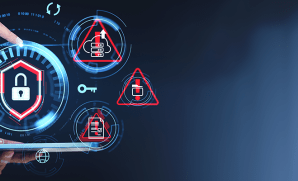Why do Enterprises perform Cyber hygiene practices such as “Penetration Testing” (Pen Test)
Publish Date: August 22, 2024An astonishing 73% of successful breaches in the corporate sector find their roots in the vulnerabilities lurking within web applications. This stark reality highlights the non-negotiable need for penetration testing—a vital tool in our cyber-defense arsenal that spotlights and neutralizes these lurking dangers.
This trend is mirrored in the actions of 75% of companies rolling up their sleeves and invested into managing their attack surfaces and bolster their vulnerability management strategies.
As established then, penetration testing is critical in helping enterprises maintain robust cybersecurity and comply with important regulations like HIPAA, SEC Mandates. By simulating real-world attacks, penetration testing allows organizations to identify vulnerabilities, evaluate security controls, and demonstrate due diligence in protecting sensitive data.
Enhancing Security Posture and Compliance
Enterprises conduct penetration testing for several key reasons:
- Validating the effectiveness of security measures: PenTest helps identify vulnerabilities and verify that security controls can withstand real-world attacks.
- Assessing the ability to defend against cyber threats: Penetration testing provides valuable insights into an organization’s security posture, allowing for targeted improvements.
- Meeting compliance requirements: Many industries mandate periodic penetration testing, such as PCI DSS, HIPAA, and SOC 2 standards.
- Protecting sensitive data: By uncovering potential attack vectors, penetration testing safeguards critical information from unauthorized access.
- Building customer trust: Demonstrating a commitment to security through regular testing can enhance confidence in the organization’s ability to protect data.
- Reducing financial risks: Penetration testing helps identify and fix vulnerabilities, mitigating the potential costs associated with data breaches, including fines and brand damage.
- Guiding security investment decisions: Insights from penetration testing help organizations prioritize their security spending and allocate resources effectively.
- Staying ahead of evolving threats: Regular testing ensures that organizations remain vigilant against new attack techniques and emerging cybersecurity risks.
Compliance and Penetration Testing
Penetration testing is critical to helping organizations comply with regulations like HIPAA (Health Insurance Portability and Accountability Act) and PCI DSS (Payment Card Industry Data Security Standard). By simulating real-world attacks, penetration testing enables organizations to assess the effectiveness of their security controls, conduct risk analyses, and demonstrate due diligence in protecting sensitive data. While HIPAA does not explicitly mandate penetration testing, it is highly recommended as a measure to protect patient data and aligns with NIST recommendations for HIPAA compliance. On the other hand, PCI DSS requires penetration testing as part of its compliance framework.
Penetration testing can be a crucial strategy in mitigating the financial ramifications of data breaches.
Furthermore, adherence to stringent data protection regulations such as the General Data Protection Regulation (GDPR) is another critical aspect covered by penetration testing. Non-compliance with GDPR can attract penalties of up to 20 million euros or 4% of the total annual turnover, showcasing the financial risks of regulatory non-adherence. Thus, penetration testing not only aids in pinpointing system vulnerabilities but also ensures regulatory compliance, protecting organizations from substantial fines.
The impact of data breaches extends beyond immediate financial loss, significantly harming an organization’s reputation. This can lead to a decline in customer trust and loyalty and, in severe cases, a drop in stock value. By identifying and rectifying vulnerabilities early, penetration testing can prevent reputation damage, securing the organization’s long-term financial health and market position.
Organizations have benefited by performing regular penetration tests and built a robust security culture within the organization. This proactive approach fortifies the organization against immediate threats and contributes to long-term cost savings.
Increasing Customer Confidence
Penetration testing can help to increase your customer confidence:
- Regular penetration tests show customers that the organization takes cybersecurity seriously and is proactively working to remediate system vulnerabilities.
- Organizations can demonstrate by sharing a high-level, non-confidential penetration test reports with customers and potential clients, offering concrete proof of their system care to protect the business interests.
- By addressing vulnerabilities identified through penetration testing, organizations can better safeguard their customers’ sensitive information, which is crucial for maintaining trust.
Improved Revenue
Demonstrating a commitment to strong security measures through regular penetration testing can improve customer retention, acquisition, and potentially higher prices for products or services.
A robust cybersecurity posture showcased by penetration testing can be a significant differentiator in today’s security-conscious marketplace. Regular penetration testing also helps ensure compliance with industry regulations, avoiding potential fines and penalties that could negatively impact revenue. A strong security posture, reinforced by penetration testing, helps safeguard a company’s reputation and prevents the loss of customers, thereby maintaining market share and sustaining revenue growth.
How can YASH Help?
In the face of an ever-intensifying demand in this area, YASH has built an Active Defense Framework to to consistently prioritize and execute effective penetration testing results to protect your business assets and ensure their enduring success.
YASH Technologies’ PenTest experts bring a wealth of knowledge and expertise and offer deep insights that empower businesses to allocate their security resources with unprecedented precision. Our Active Defense Framework will support in identifying and help you to gain visibility of the critical vulnerabilities. Our laser-focused approach to enhancing an organization’s security posture not only guards against immediate threats but also delivers an optimized return on security investments, laying a solid foundation for sustainable growth and resilience in the face of evolving cyber threats.
Our existing customers have chosen us as a strategic partner to ensure that investment made in impactful to their success. How about talking to us?
Write to us cybersecurity@yash.com or click here to schedule a consultation with our experts.
Senthilvel Kumar
Vice President – Cyber Security Services
Senthil is a cyber security Practice Head and VP at YASH offering advisory on cyber security solutions to CxO's, CISO, Board Level Executives for building a robust security modernization programme covering on-prem and Cloud.















